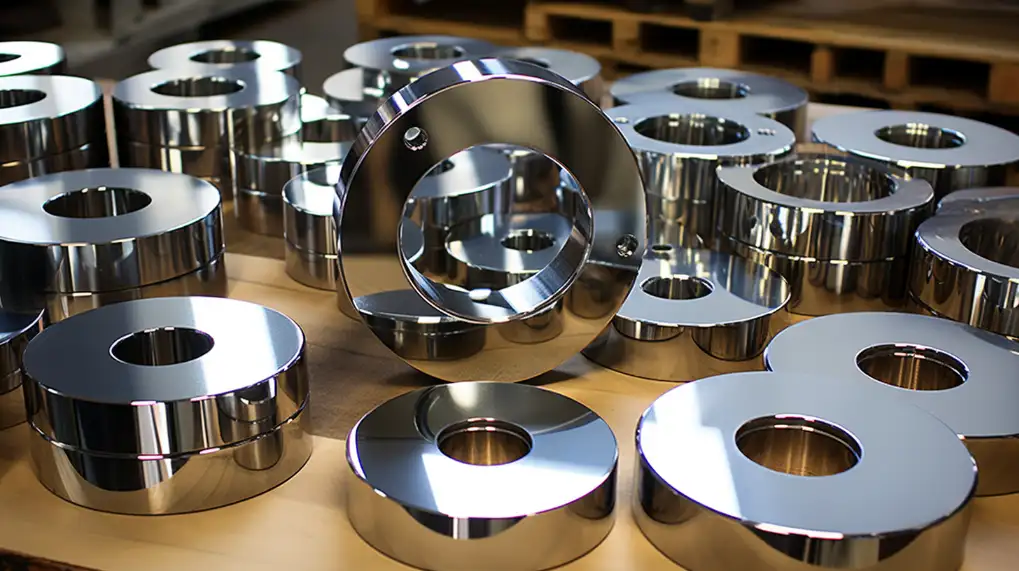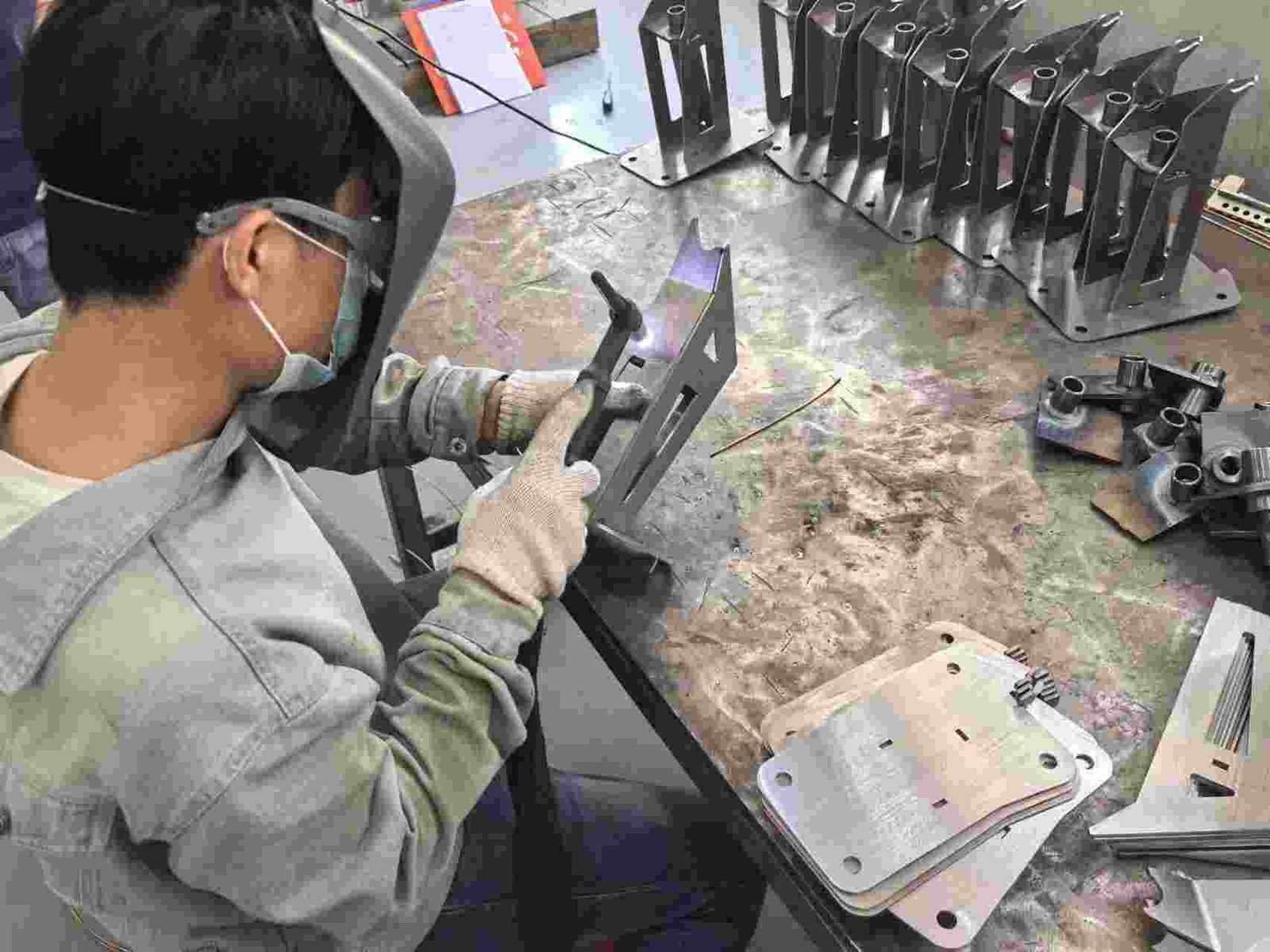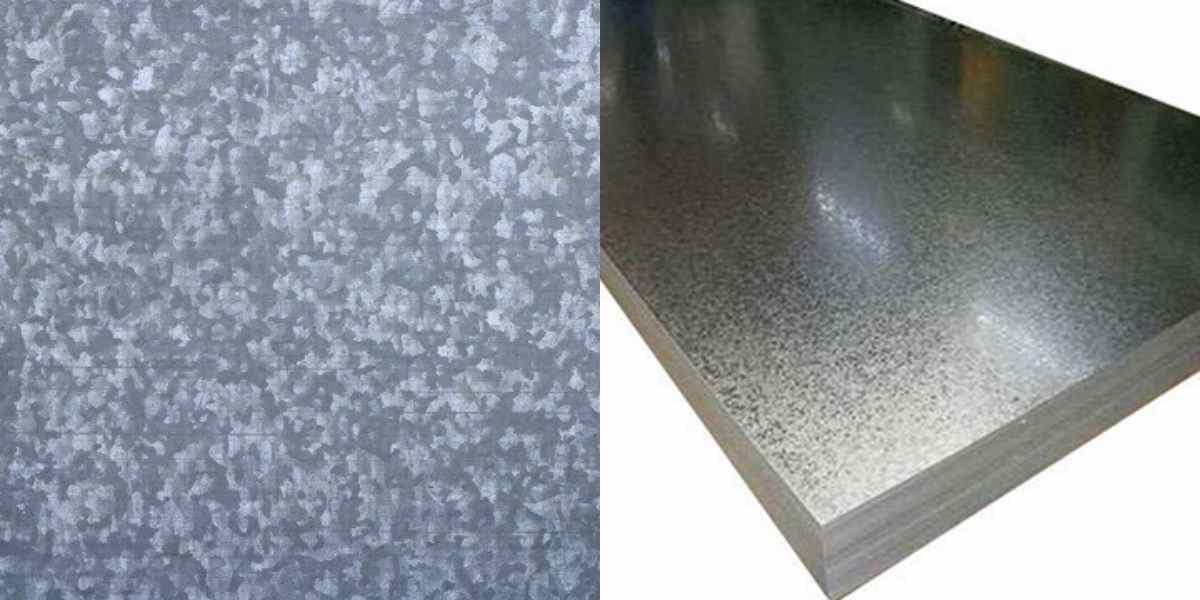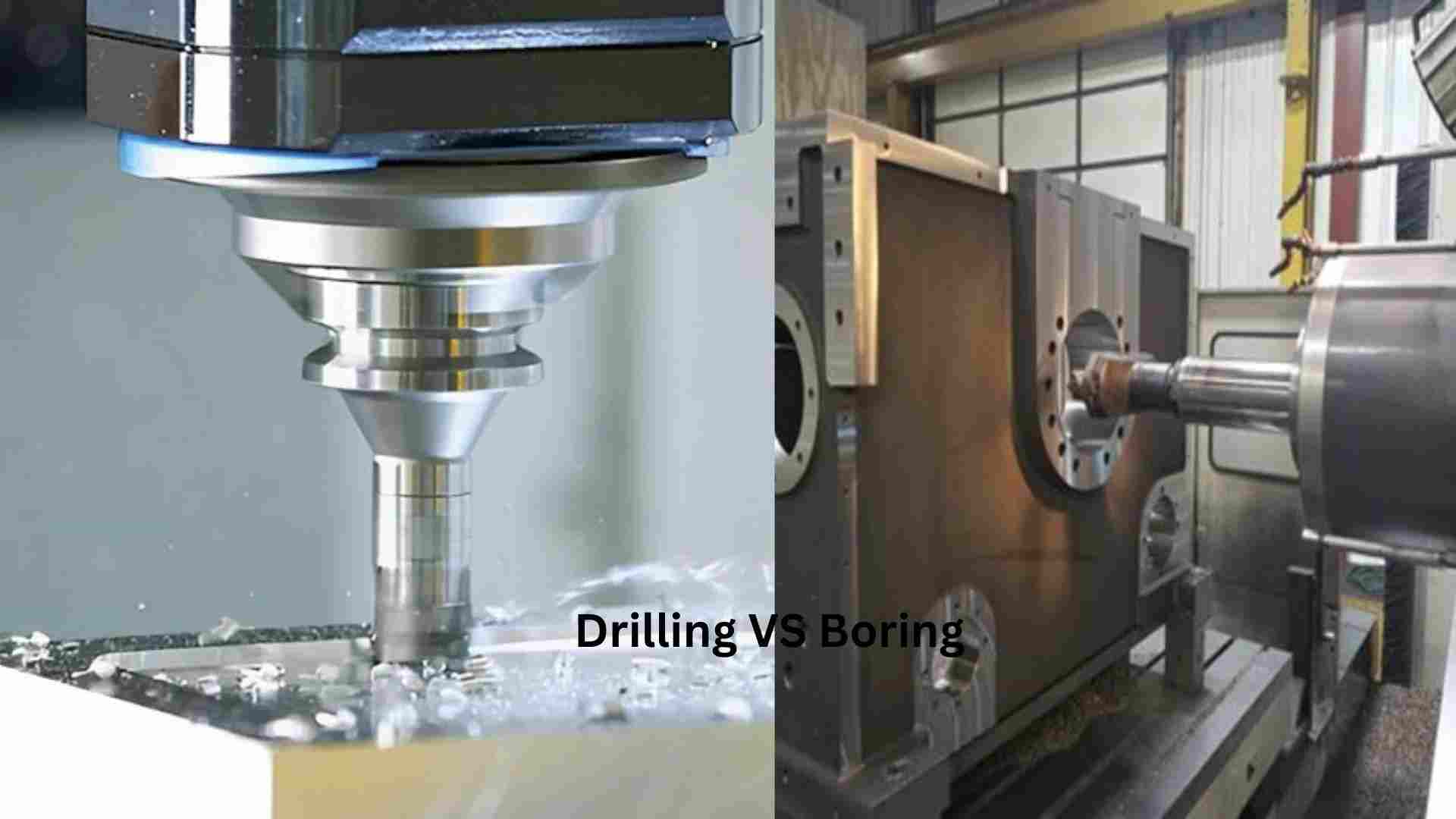Have you ever wondered how the metal components that make your gadgets look sleek and precise are manufactured? The art of sheet metal form is a process that transforms flat sheets into unique products. This guide will provide you with a wealth of information, whether you are a curious enthusiast looking to improve your skills or a professional who wants to learn more.
Sheet metal forming involves the deformation of metal sheets to create desired shapes. It produces parts for the automotive, aerospace, and construction industries using stamping, bending, or cutting techniques. This method is efficient and offers precision in producing durable and high-quality components. This versatile technique is essential for creating intricate metal sheet designs and structures.
Here are some tips and tricks to help you better understand and appreciate sheet metal forming.
Understanding Sheet Metal Forming
What is sheet metal forming?
Sheet metal forming, also known as sheet metal deformation or sheet metal cutting, is an industrial technique that shapes metal sheets by deforming and chopping them. Shengen uses a range of techniques, such as bending, punching, and cutting, to create precision parts. Our expertise transforms simple metal sheets into complex components that meet our customers’ specifications.
Modern Manufacturing: The Importance of Sheet Metal
Sheet metal is vital in today’s manufacturing industry due to its durability and versatility. It produces parts in many industries, including aerospace, automotive, and electronics. Sheet metal is a cornerstone in modern manufacturing, offering quick production of customized and durable components. We are at the forefront of this technology, and we use our versatility to offer solutions that meet the needs of our clients.
Sheet Metal Basics
Definition and types of sheet metal
Sheet metal comprises any thin, flat piece of metal, varying in thickness to suit different applications. Our team works with various types such as aluminum, stainless, copper, brass, and more, each selected for its unique properties and specific application suitability. Our expertise ensures that we choose the best type of sheet metal for durability and quality in every project.
Metals commonly used in sheet metal forming.
Each metal that we use for sheet metal forming has its properties.
- Aluminum: Lightweight, corrosion-resistant aluminum ideal for automotive and aerospace industries.
- Stainless steel: Stainless steel is popular in industrial and construction applications for its resistance to corrosion and heat.
- Copper: Highly malleable and conductive, copper is often used for electrical components and roofing.
- Brass: A combination of copper and zinc known for its strength and flexibility. It also has acoustic qualities.
Understanding these properties will help you choose the best material for your project. This will ensure that the end product meets and exceeds all expectations.
Sheet Metal Forming Techniques
Traditional Forming Methods
Shengen uses several tried-and-true techniques to form metals precisely.
- Stamping: In this process, we press a die into a metal sheet to create patterns, textures, or shapes, efficiently supporting mass production and widely used in manufacturing automobiles and appliances.
- Deep drawing: This process mechanically draws a metal sheet into a forming tool by radial action. This method is perfect for hollow, deep shapes such as pots and saucepans.
- Bending: The most common method is manipulating the metal into complex shapes and angles. It is precise and can create various shapes, from simple bends to complex parts.
Advanced Forming Sheet Metal Techniques
As technology advances, so do our methods at Shengen:
- Hydroforming: An economical way to shape metals in lightweight, structurally-strong pieces. It uses high-pressure hydraulic fluid to press metal into dies, ideal for complex shapes.
- Superplastic Forging: We heat an alloy metal to high temperatures to stretch it into thin and complex shapes. This technique benefits the aerospace and automotive industries because it can create intricate, vital components.
Comparison of Forming Techniques
The exemplary sheet metal forming method depends on several factors, such as the material properties, the desired shape, the production volume, and the cost.
- Traditional and Advanced: The traditional methods are well-established, cost-effective, and suitable for many applications. Advanced techniques, however, offer greater precision and more possibilities for complex shapes and designs.
- Precision and Efficiency: Advanced techniques like superplastic forming or hydroforming can provide more precision and efficiency in specific applications, but they may require higher costs and specialized equipment.
- Application suitability: When choosing between different techniques, it is essential to consider the specific needs of the application, such as the type of metal used, the complexity of the design, and the desired finish and strength of the product.
Shengen carefully considers these factors before recommending and implementing the most suitable forming technique for your project.
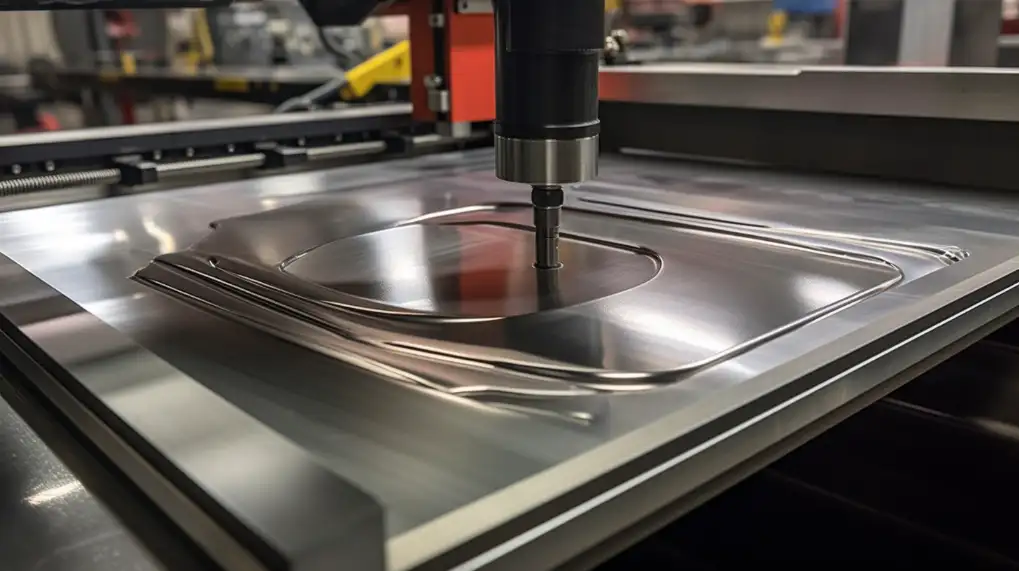
Sheet Metal Forming Tools and Equipment
Hand Tools: Anvils and Hammers
The manual tools have been the backbone of the traditional sheet metal industry.
- Hammers: For centuries, artisans have used hammers to shape metal with precision and care.
- Anvils: We use anvils to shape metal and provide a stable surface.
- Dies: When stamping or using other methods of forming metal, dies are used to shape it into precise shapes, ensuring accuracy and consistency in production.
Types of Mechanical Presses and Their Uses
Mechanical presses are at the forefront of our production as we shift to a more automated system.
- Mechanical presses: These machines are known for their efficiency and power. They deliver force using mechanisms such as cranks, eccentrics, or knuckle joint joints.
- Hydraulic Presses: Hydraulic presses, known for their high force and precise control, are used to work with materials such as stainless steel.
- Pneumatic presses: These machines use air pressure to exert force onto the metal. They offer speed and flexibility for various tasks.
Automating Sheet Metal Forming
Automation has become vital to the quest for efficiency, precision, and effectiveness.
- CNC machines: Computer-numerical control (CNC) is a technology that allows precise control of cutting, bending, and shaping processes. This minimizes human error while maximizing productivity.
- Laser Cutting machines: These laser cutting machines use high-powered, high-speed lasers to cut and shape precisely. They are ideal for high production rates and detailed work.
- Robotic arms: Used to perform tasks from welding to assembly. They increase the sheet metal forming processes’ safety, efficiency, and consistency.
Shengen combines these tools and equipment with its skilled workforce to produce products of the highest quality and precision.
Materials Selection for Sheet Metal Forming
Factors Influencing Material Choice
When selecting the suitable material for sheet metal forming, there are several factors to consider:
- Mechanical Property: The metal’s strength, flexibility, hardness, and elasticity determine its shaping and application.
- Resistance to Corrosion: The environment where the part will be used is critical.
- Considerations for Weight: This is particularly important in the automotive and aerospace industries, where weight affects performance.
- Cost-Effectiveness: It is essential to balance the quality of metals and their capabilities with budgetary constraints.
- Availability: The availability of metals on the market can affect the choice, particularly for large-scale or continuous production.
The pros and cons of different metals
Each metal has its advantages and disadvantages.
- Aluminum: Aluminum is lightweight and corrosion-resistant, making it ideal for packaging and transportation. It is less durable than other metals and, therefore, only suitable for some applications.
- Stainless steel: Stainless steel is used widely in appliances and construction because of its resistance to corrosion and heat. However, it’s more expensive and heavier than other metals.
- Copper: Highly malleable and conductive, copper is an excellent material for electrical components. Steel is more robust and more durable, but it’s also more expensive.
- Brass: Resistant to corrosion and durable, brass is often used in decorative products and applications that require low friction. Brass is not recommended for applications requiring high strength.
Shengen considers all these factors when advising on the best sheet metal for your sheet forming requirements. This ensures that the end product meets and exceeds your expectations.
Design Considerations for Sheet Metal Forming
Understanding Material Deformation
Understanding how materials deform when subjected to different forces is essential for sheet metal forming.
- Elastic Deformation: Temporary change in form occurs when the material returns to its original shape after removing the force.
- Plastic Deformation: Permanent plastic deformation happens when the material stretches past its yield point.
By recognizing these behaviors, we can predict how metals behave during the forming processes and ensure the integrity of the final product.
The three most important design parameters are thickness, bend radius, and edge conditioning.
When designing sheet metal forming, there are several important parameters to consider:
- Thickness: Metal thickness has an impact on its strength and bendability. Thicker metals tend to be more robust but also less flexible.
- Bend radius: The bend radius is the minimum radius at which you can bend metal sheets before weakening. A smaller bend radius may lead to metal fatigue and cracking.
- Edge conditioning: The edge of the metal sheet is essential, particularly in applications with high stress. Edge rolling and deburring are two standard methods to improve durability and safety.
We at Shengen consider all of these factors and leverage our expertise to optimize each design for functionality and manufacturability.
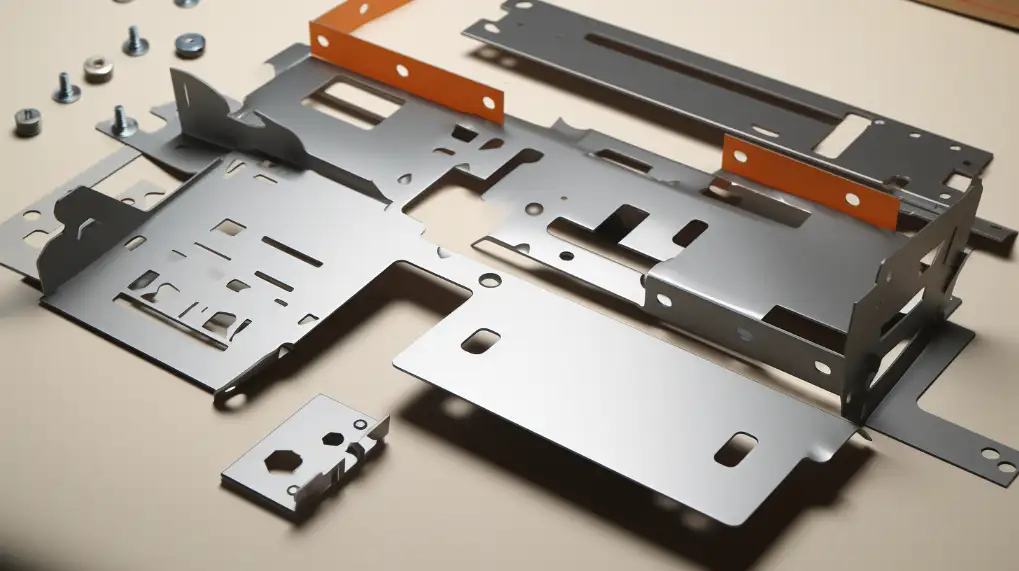
Sheet Metal Forming Processes
Cold Forming vs. Hot Forming
The temperature of the metal during formation plays an essential role in the outcome and process.
- Cold Forging: The process is performed at or near room temperature to maintain the strength and hardness of the metal. This method is ideal for achieving smooth surfaces and precise details. It may be more complex and require more significant force, which can make the material harder.
- Forming Hot: Forming hot involves heating metals above their recrystallization temperatures. The metal becomes more pliable and easier to work with. This trade-off can include changes to the microstructure of the metal and a reduction in strength.
The role of temperature in metal forming
The temperature has a significant impact on the behavior of metals during forming.
- Material properties: Heating and cooling metals alter their properties, such as hardness, strength, and flexibility. This affects how they react to deformation.
- Forming forces: Hotter metals need less force to form, which reduces wear on machines and tools.
- Surface finish and tolerance: Temperature affects the final product’s surface finish and dimensional tolerance. Cold forming produces smoother surfaces with tighter tolerances.
Understanding these dynamics will help you select the best forming process to meet your needs and ensure the highest performance and quality of the product. We at Shengen carefully consider the impact of temperature on every project to provide optimal results for our customers.
Sheet metal forming: Quality and precision.
Measurement and Accuracy
We at Shengen understand the importance of quality and precision in our sheet metal products. We ensure that every sheet metal product meets the highest quality standards.
- Dimensional inspection: Measurement of physical properties using tools such as calipers, coordinate measuring machines (CMM), and micrometers.
- Surface quality checks: Check for smoothness, consistency, and the absence of imperfections by visual and tactile means.
- Process control: Implementing stringent controls at each stage of the forming processes to maintain consistency and minimize variations.
Common Defects – How to avoid them
Sheet metal forming can be prone to certain defects, even with the strictest quality control. Understanding them and preventing them is the key.
- Springback: This occurs when a metal attempts to return to its initial shape after bending. This problem can be mitigated using the right bend radius and correctly calculating the bend allowance.
- Wrinkling: Wrinkles may form due to compression stresses during deep drawing or bending. Using the correct die clearance and thickening material can avoid this.
- Tearing: Excessive stretch can cause the metal to tear. Understanding the metal’s stretch limits and ensuring an even force distribution when forming is crucial to avoiding this.
Shengen is committed to providing products of the highest quality and precision by closely monitoring and refining these aspects.
Sheet Metal Forming Innovations
Emerging Technologies and Trends
The sheet metal industry constantly evolves with innovations that aim to improve efficiency, precision, and sustainability.
- Additive manufacturing: 3D printers are increasingly being used to produce complex parts and prototyping quickly and efficiently, revolutionizing design and testing phases.
- Robotic and Automated Systems: Enhancements in automation and robotics increase precision speed, reduce costs, and improve safety.
- Smart Factory and Industry 4: Adoption of IoT and AI leads to more intelligent and more connected manufacturing processes, with improved monitoring, proactive maintenance, and adaptive techniques.
Future Prospects of Sheet Metal Forming
The sheet metal forming sector is poised to become more efficient, innovative, and sustainable in the future:
- Material Science Advances: Research into new alloys and materials is ongoing and promises lighter, stronger, and more flexible sheet-metal options.
- Sustainable practices: A greater focus on waste reduction and energy conservation will lead to developing environmentally friendly processes.
- Flexibility and Customization: As industry and consumer demand change, there will be an increased need for small-batch, customized production, which will push for more adaptive and flexible forming methods.
We are excited by these new developments at Shengen and committed to integrating cutting-edge technology and practices to stay on the leading edge of the sheet metal industry.
The Challenges and Solutions of Sheet Metal Forming
Common challenges in the industry
Sheet metal forming faces several challenges affecting efficiency, quality, and profitability.
- Material limitations: Different materials have different properties, affecting their formability.
- Precision & Consistency: It can be challenging to achieve high levels of accuracy and consistency when mass producing, leading to waste and increased costs.
- Cost pressures: Finding the right balance between quality and cost-effectiveness can be challenging, particularly with fluctuating material prices and labor costs.
- Environmental Impact: It is becoming more critical to reduce the amount of waste, energy used, and emissions during production.
Innovative Problem-Solving and Solutions
To meet these challenges, the industry has adopted innovative solutions.
- Advanced Material Engineering: Develop new alloys and treatments to enhance metal properties, making them easier to work with and more versatile.
- Precision Engineering & Quality Control: Employing improved measuring and inspection techniques and tighter process controls to ensure high precision & consistency.
- Lean manufacturing: Adopting lean principles reduces waste, improves efficiency, and lowers production costs.
- Sustainable practices: Implementing energy recovery and recycling to reduce the environmental impact of sheet metal forming.
Shengen and other industry leaders are continuously exploring and adopting solutions to overcome challenges and pave the way for an efficient, precise, and sustainable future of sheet metal forming.
Conclusion
Shengen is committed to pushing the limits of quality, innovation, and efficiency in sheet metal form. We strive to meet the changing needs of industries worldwide by understanding and utilizing different materials, technologies, and techniques. From the fundamentals of sheet metal to the most recent advancements in the industry, our journey demonstrates our commitment to customer satisfaction and excellence.
Do you need a reliable sheet metal parts manufacturer? Shengen is the place to go. We specialize in sheet metal laser-cutting, sheet steel bending, folding & forming, and sheet metal welding. We place a high priority on establishing trust, maintaining standards of quality, providing competitive prices, and guaranteeing timely delivery.
FAQs:
What are the applications of sheet metal forming in different industries?
Due to its versatility, sheet metal forming can be found in a wide range of industries:
- Automotive: Body panels, frames, and engine parts due to their lightweight and durable nature.
- Aerospace: Precision and strength are crucial when crafting aircraft structures, interior cabin components, and detailed fittings.
- Construction: For roofing and structural elements. HVAC components can also benefit from its ease of installation and durability.
- Electronics and Appliances: When creating enclosures, chassis, and brackets, which require precision and aesthetics.
- Medical equipment: For surgical instrument enclosures and supports that require high hygiene standards.
What is the effect of the material on the forming process?
The choice of material is crucial in sheet metal forming.
- Formability & Durability: Every material has its own formability and durability thresholds, which impact how it can be shaped and suitably adapted to different applications.
- Tooling requirements: Different materials may require specific tools or treatments for safe and effective forming.
- Finishing and Aesthetics: The material’s inherent characteristics can affect the final appearance and require additional finishing processes.
- Cost Effectiveness: The cost and availability of materials affect the budget and feasibility of a project.
What are the most recent advances in sheet metal forming?
Recent technological innovations have improved the efficiency, precision, and sustainability of sheet metal forming.
- Additive Manufacturing and 3D Printing: Allows for complex geometries, rapid prototyping, and other impossible features using traditional methods.
- Intelligent and Automated Systems: Includes robotics and AI to improve manufacturing processes’ precision, efficiency, and adaptability.
- Advanced Material Technologies: Development of more robust, lighter, and more flexible materials to meet industry demands.
- Ecological Practices: Emphasis on waste reduction, improvement of energy efficiency, and recycling during manufacturing.
More Resources:
Sheet metal characteristics – Source: Clickmetal
Sheet Metal Forming Tools and Equipment – Source: Baileigh
Roll Forming Design Considerations – Source: Hynesindustries
Sheet Metal Quality Control – Source: US-Metalcrafters
Hey, I'm Kevin Lee

For the past 10 years, I’ve been immersed in various forms of sheet metal fabrication, sharing cool insights here from my experiences across diverse workshops.
Get in touch

Kevin Lee
I have over ten years of professional experience in sheet metal fabrication, specializing in laser cutting, bending, welding, and surface treatment techniques. As the Technical Director at Shengen, I am committed to solving complex manufacturing challenges and driving innovation and quality in each project.

